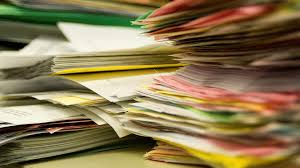Starting Your Business's Environmental Journey
“My business is too small to make a difference.”
I hear this often from women business owners when discussing environmental practices. Whether you’re running a home-based consulting firm, a local retail shop, or a small service business, it’s easy to think your environmental impact is negligible. But here’s the reality: small businesses collectively represent over 90% of businesses globally. Our individual actions, when combined, create significant change.
Starting with Paper: A Simple Step with Surprising Impact
Let’s talk about something every business uses: paper. The average office worker uses 10,000 sheets of paper annually. For a five-person small business, that’s 50,000 sheets – equivalent to six trees per year. Multiply that by millions of small businesses, and suddenly our “small” impact isn’t so small.
Digital-First Success Story: Sarah's Accounting Firm
Sarah, a client who runs a three-person accounting firm, was skeptical when we first discussed going digital-first. “My clients expect paper documents,” she said. But after implementing simple changes, she discovered something surprising:
-
- Client satisfaction increased with digital document sharing
- Her team saved 5-7 hours weekly previously spent handling paper
- Annual paper costs dropped by $1,200
- Storage needs decreased, freeing up office space
- Client response time improved significantly
Her digital transition took just three months, starting with these basic steps:
-
- Converting intake forms to digital
- Using electronic signatures
- Setting up secure document sharing
- Creating digital filing systems
- Training clients on digital access
Your Digital-First Action Plan
Ready to start? Here’s your week-by-week plan:
Week 1: Audit Your Paper Use
-
- Track all paper documents created
- Note which documents are printed routinely
- Identify paper-heavy processes
- List current paper storage needs
Week 2: Choose Your Digital Tools
-
- Select a document sharing platform
- Set up electronic signature capability
- Create digital filing structure
- Test new systems internally
Week 3: Start Client Communication
-
- Announce digital transition plans
- Offer digital options alongside paper
- Gather feedback and address concerns
- Provide simple how-to guides
Week 4: Begin Implementation
-
- Convert top 3 paper processes to digital
- Train team on new procedures
- Document success metrics
- Adjust based on feedback


Numbers That Matter
Still wondering if it’s worth the effort? Consider these figures:
-
- Average cost per paper file: $20
- Average cost per digital file: $0.50
- Time saved searching digital vs. paper files: 6-8 minutes per document
- Annual storage cost savings: $200-500 per filing cabinet eliminated
But the benefits extend beyond your bottom line:
-
- Enhanced data security
- Improved disaster recovery
- Better client experience
- Reduced environmental impact
- Increased team efficiency
Common Concerns Addressed
What about clients who prefer paper?
Maintain paper options during transition, but educate on digital benefits. Most clients appreciate the convenience once they try it.
Is digital document storage secure?
Today’s cloud storage often offers better security than physical documents. Choose reputable providers and implement basic security practices.
Won’t this be expensive to implement?
Start with free or low-cost tools. Many small businesses find the savings in paper, ink, and time offset implementation costs within months.
Beyond Paper: Your Next Steps
Once you’ve mastered digital-first practices, consider these next-level environmental actions:
-
- Energy use monitoring
- Green purchasing guidelines
- Waste reduction programs
- Sustainable supplier selection
Each step builds on the last, creating a comprehensive approach to environmental responsibility that benefits your business, your clients, and our planet.
Making It Count
Remember: environmental responsibility isn’t about perfection – it’s about progress. Start with one change, measure its impact, and build from there. Your small business might feel like a drop in the ocean, but together, we create waves of positive change.
Ready to start your environmental journey? Begin with a simple step: track your paper use for one week. Note what you print, copy, and file. Then ask yourself: could this be digital? The answer might surprise you – and lead to the first of many positive changes in your business.
Next in this series: “Energy Tracking Made Simple: Small Business Solutions for Big Savings”
Join the Conversation: Share Your Commitment
What small changes have you implemented in your business?
Share your experience in the comments below.


